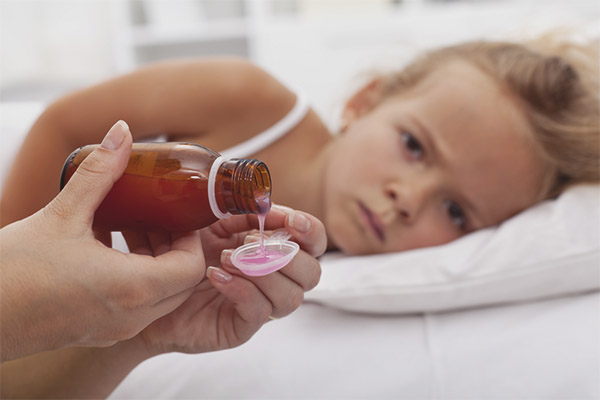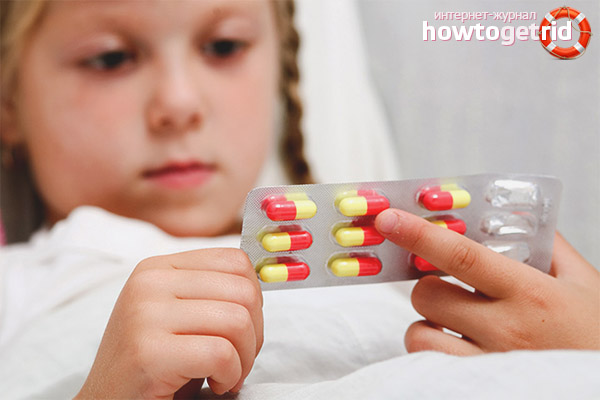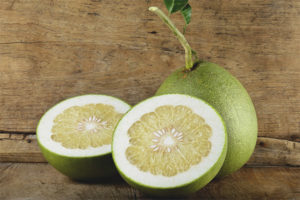The content of the article
The fact that in the usual sense is considered to be a cold, in fact, represents a whole group of diseases that have the most different nature of the course. This fully applies to influenza and other acute respiratory diseases. This group includes a large number of pathological conditions associated with the upper and lower respiratory tract, bacterial diseases, such as pharyngitis.
The immune system of children is not yet formed, so they are much more likely to suffer from colds than adults. Even if a child is strong and, as they say, “breathes” with health, he can get sick with a frequency of 4-6 times a year. This is due to close contact with sick people in the period of recovery of a cold incidence or epidemics.
Another reason is the altered immune status, the degree of virulence of the pathogenic microflora. In this regard, the issue of the quick recovery of a child after a respiratory infection does not lose its relevance.
Conditions for the occurrence of the disease
There may be several such conditions and all of them, one way or another, affect the possibility of the disease:
- Contact with a sick child or adult. The most common method of spreading respiratory infection is airborne droplets. The pathogen enters the body through the nasal mucosa or conjunctiva of the eye. The child is capable of catching infection anywhere. The source of the infection may be sick parents or an occasional sick person in a public place.
- Violation of hygiene rules. A baby can touch objects on which a pathogen has fallen from a sick person. After that, he can hold his hands to his mouth, eyes, nose. In this case, the risk of becoming infected is quite high in nature. Infectious onset can be found on almost any object, up to the door handle.The child touches them, but it does not always wash their hands thoroughly. Therefore, the possibility of a disease arises.
- Hypothermia This factor leads to the fact that the vessels are subjected to spasm, as a result of which local immunity is reduced. Then the emergence of a new disease or aggravation of the existing chronic pathology is possible.
Characteristics of the first symptoms
Any catarrhal disease is accompanied by a number of characteristic signs:
- Fever. Heat at first almost always accompanies an acute cold. The temperature rise is observed rather quickly and can reach 38 degrees and higher numbers. If complications do not join, then after three days the temperature index declines.
- A condition characterized by general malaise. A child may notice a “brokenness” in the whole body, a headache. All muscles begin to break, sleep is disturbed, taking on a restless nature. All this is a consequence of intoxication of the body as a result of the action of the breakdown of microbial cells.
- The appearance of a cold. It is manifested by copious nasal discharge.There is congestion and considerable difficulty in nasal breathing. Often joins frequent sneezing and excessive tearing.
- Pain in the throat. The back of the pharynx turns red. Doctors usually say that redness is also observed from the side of the soft palate. In some cases, a sharp pain in the throat quickly passes, in others it can persist throughout the course of the disease.
Danger of individual symptoms
There are a number of signs of the disease, which should cause concern and be a cause for immediate treatment for medical help. These include the following points:
- Feverish period lasts too long. If the fever lasts more than three days, then this may indicate the addition of complications.
- Dehydration of the body. This condition can occur when there is the presence of loose stools or vomiting. A child cannot fully drink. In this case, there may be signs characteristic of dehydration. There is a retraction of the eyes. Urination is disturbed and is rare, urine darkens. This is an urgent condition for the baby.Medical assistance is urgently needed, since such a state is fraught with danger to life.
- Labored breathing. It can be increased or every breath is associated with additional efforts. Medical assistance for such children should be provided immediately.
- Changes in the nature of behavior. The child becomes sluggish, inhibited, all reactions are markedly reduced. In severe cases, consciousness is disturbed, and even fainting occurs. In such cases, you should immediately call an ambulance.
Reaction to cold depending on age
- Infants or children of the first years of life. During this period, any cold infection flows much more seriously than in older age. Very often during this period join complications.
- Preschoolers and schoolchildren. In 2-3 years, organized children are able to get sick for a season from 6 to 8 times. On average, the disease lasts two weeks or less. Older children tolerate the disease much better, and they have less complications. But it is always necessary to remember that if the disease is not treated, it can lead to complications.
Medical correction of colds
For the treatment of the disease using various means.
Medication
Used drugs in the following areas:
- Means to combat viruses. These drugs are made on the basis of interferon. This is a special protein that helps fight the virus.
- Immunomodulators. They are designed to maintain immunity, which is weakened due to illness. Ascorbic acid is indicated. Under its influence, the production of its own interferon occurs.
- Means for narrowing the vessels of the nose. Such drugs are indicated when there is a runny nose and nasal congestion. For the treatment of drugs such children can be given only according to medical appointments and no more than 5 days in a row.
- Funds to combat fever. Paracetamol, Nurofen and their derivatives. The use of such drugs can reduce the temperature. A good tool is RINZASIP for children. It contains paracetamol in the pediatric dosage. It is used for children who have reached the age of 6 years. The drug is given to children when the first signs of a cold appear.Means struggling with symptoms and relieve the condition of the baby.
Means for non-drug treatment
In addition to medicines, you can use the methods of traditional medicine:
- Medicinal herbs in the form of decoctions. Broths with chamomile, hips, mother-and-stepmother, and other medicinal plants are suitable. We must understand that all of them are not the main treatment, but only complement it. In addition, the rapid onset of the effect of them should not be expected.
- Fresh fruits and juices. They will fill the body with vitamins, which will provide real help in the fight against colds. They should also complement the main treatment.
- Honey. Its use is very useful for colds. You can take it with warm milk or separately. But the approach to the treatment of honey should be extremely cautious, because it is a pronounced allergen. In addition, honey for the first year of life cannot be given to babies. It should be noted that when honey is dissolved in hot water, all its properties are lost.
- Tea combined with raspberries. It is an excellent tonic. Caffeine tea and acetylsalicylic acid raspberries have a combined effect and help in the fight againstcatarrhal disease. But the berries when added to a hot drink can lose their properties.
Important! We must remember that traditional medicine does not undergo clinical trials, which take place during the approbation of official medicines. They may be able to help to some extent, but should be used only as a supplement, and not the main means of dealing with a cold.
Rational nutrition and compliance with drinking regime
In the acute period of the disease is supposed to use for the diet of dairy and vegetable foods. If a child does not eat well, you should not force him to eat through force. Shows copious drinking. The volume of daily fluid should be increased to 1.5 liters. This will help relieve the symptoms of intoxication and fight dehydration. When breastfeeding spend more frequent attachment to the breast. Older children are given a warm drink in the form of drinks, fruit drinks.
Patient care rules
At the beginning of the disease, the child is shown bed rest. The room should not be cold, but not hot. The temperature is maintained at 20 degrees. All the rooms of the apartment, and not only the room of the patient, are subjected to daily wet cleaning with the use of disinfectants.
Fact! With the flu, antibiotics are not used because they do not affect the virus. They are prescribed only in case of accession of a bacterial complication.
Do not self-medicate. It will not bring benefit, and it can render harm. It should be in strict accordance with all medical prescriptions.
In conclusion, it should be said that a cold or ARVI in themselves are not terrible diseases. The danger is only their complications. Therefore, it is necessary to treat colds in a timely manner.
Video: what to do at the first sign of a cold











To send